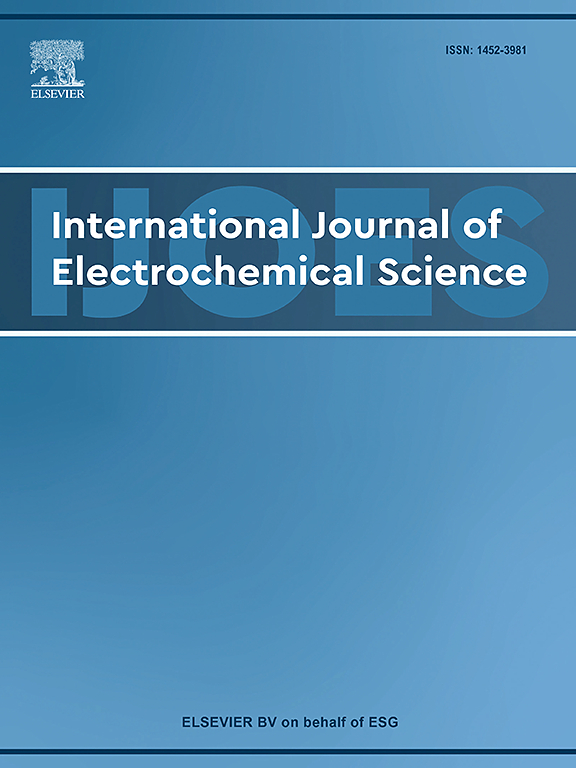Assessment of the inhibition of carbon steel corrosion by an imidazole derivative in 1 M HCl: Experimental and theoretical approaches
IF 1.3
4区 化学
Q4 ELECTROCHEMISTRY
International Journal of Electrochemical Science
Pub Date : 2025-02-25
DOI:10.1016/j.ijoes.2025.100978
引用次数: 0
Abstract
This investigation examines the application of 2, 4,5-tris(2-methoxyphenyl)-4,5-dihydro-1H-imidazole (2M-C), a recently synthesized, ecologically benign imidazole derivative in terms of corrosion inhibitor for carbon-steel (C-Stl) in a 1 M HCl acid solution. The findings of this study could lead to significant advancements in the field of corrosion inhibition. The chemical and electrochemical methods used to evaluate the effectiveness of the 2M-C molecule were weight loss (WL), potentiodynamic polarization (PDP) and electrochemical impedance spectroscopy (EIS). Quantum chemical analyses were also conducted. The results revealed excellent anticorrosion properties, with maximum inhibition efficiency (IE%) reaching 98.6 % at a concentration of 10−3 M. PDP analyses indicate that 2M-C acts as a mixed/inhibitor. The effects of temperature on the inhibition process suggested chemical adsorption of 2M-C onto the carbon-steel/surface, apparently following the Langmuir-adsorption model. Analyses by Scanning Electron Microscopy (SEM) coupled to Energy Dispersive X-ray (EDX) & UV–visible spectroscopy confirmed the formation of a protective film that restricts the access of corrosive ions to the metal surface. Moreover, alongside the experimental findings, theoretical investigations employing Density Functional Theory (DFT) and Molecular Dynamics (MD) can elucidate the reactive sites of the molecule and enhance comprehension of the adsorption process.
求助全文
约1分钟内获得全文
求助全文
来源期刊
CiteScore
3.00
自引率
20.00%
发文量
714
审稿时长
2.6 months
期刊介绍:
International Journal of Electrochemical Science is a peer-reviewed, open access journal that publishes original research articles, short communications as well as review articles in all areas of electrochemistry: Scope - Theoretical and Computational Electrochemistry - Processes on Electrodes - Electroanalytical Chemistry and Sensor Science - Corrosion - Electrochemical Energy Conversion and Storage - Electrochemical Engineering - Coatings - Electrochemical Synthesis - Bioelectrochemistry - Molecular Electrochemistry

 求助内容:
求助内容: 应助结果提醒方式:
应助结果提醒方式:


